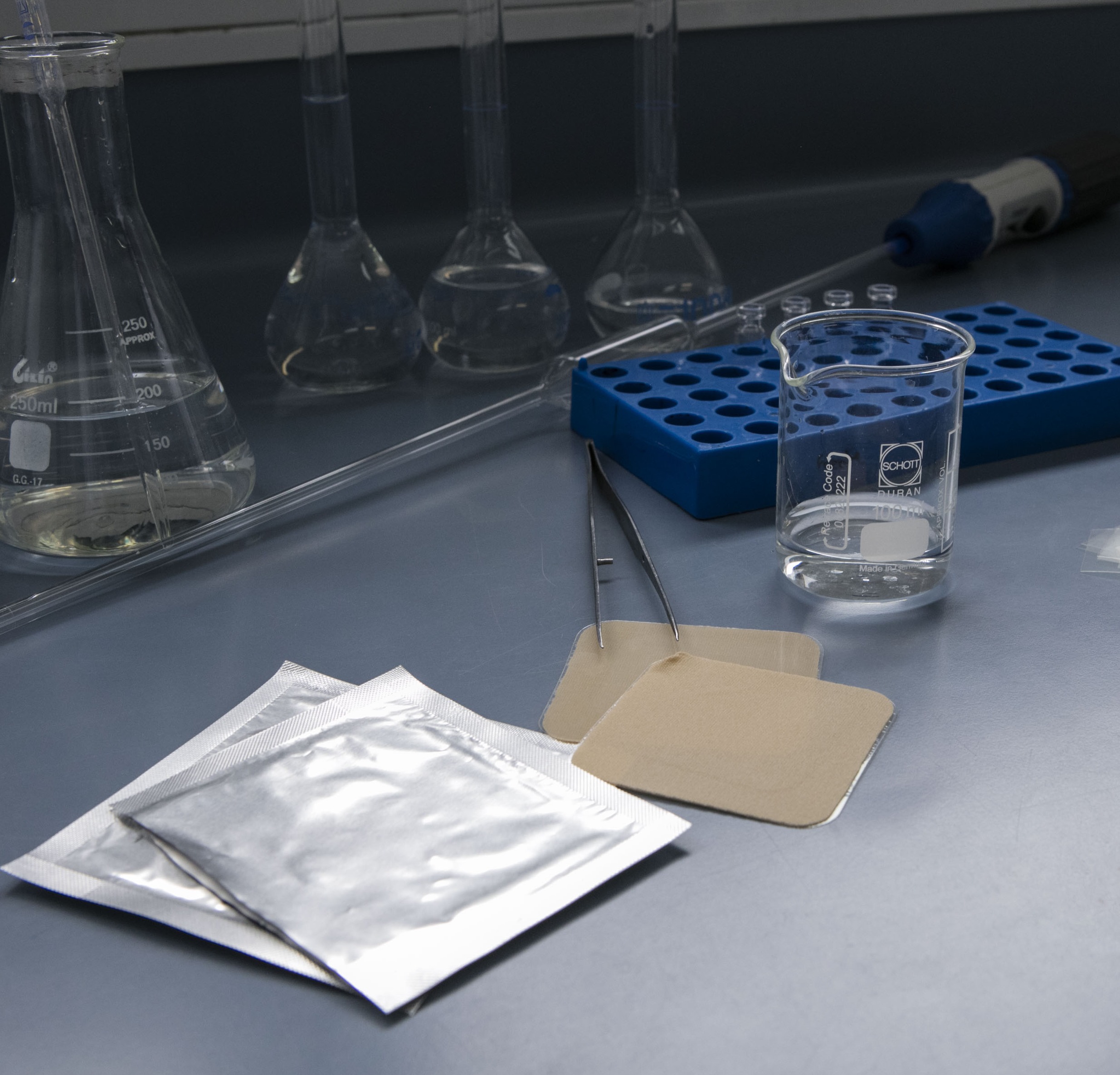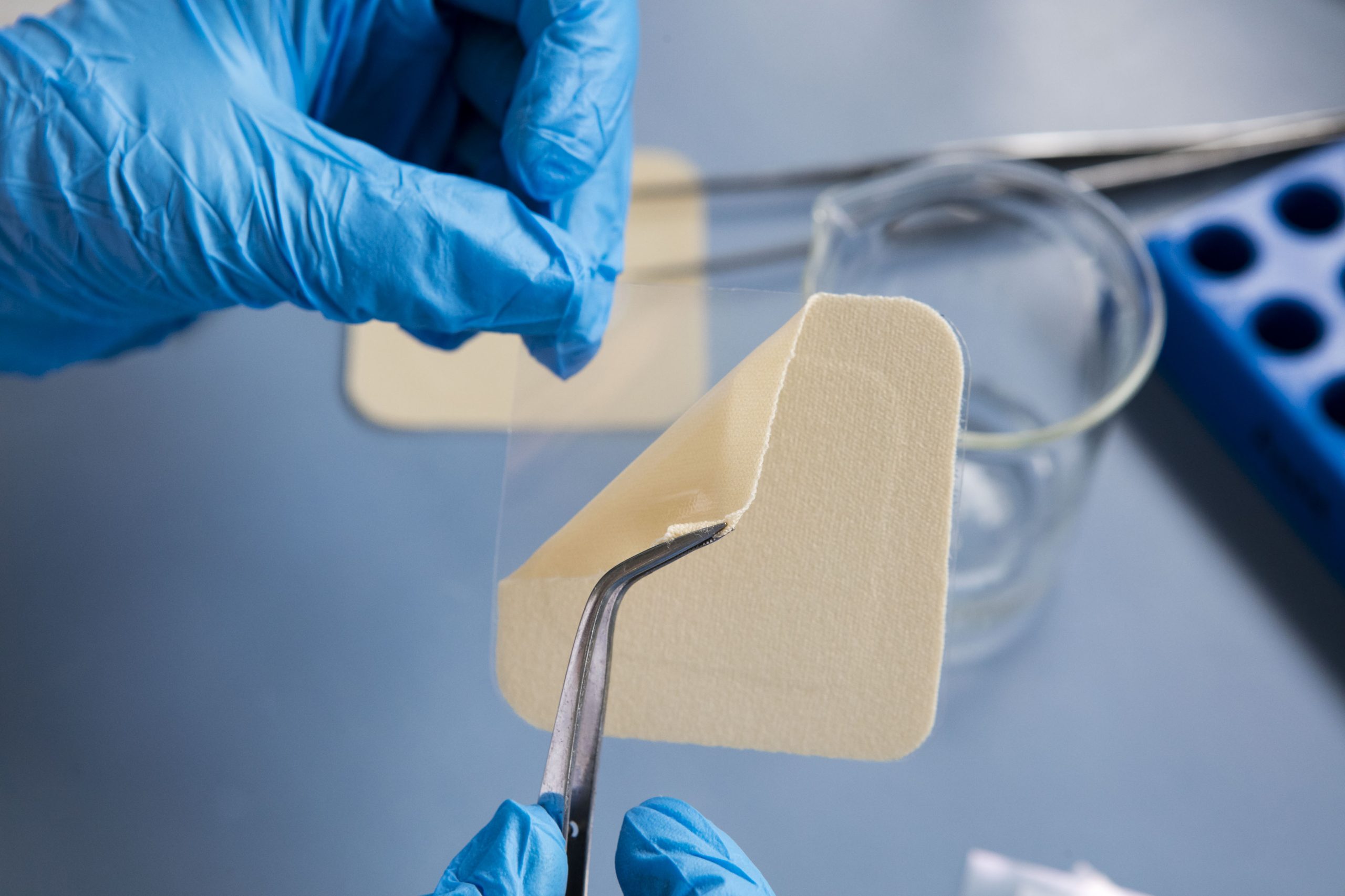Dermocosmetic patches are an effective and versatile alternative in aesthetics, with better absorption and visible effects on the skin.
BLOG
Effective sweat management is crucial for the success of medicinal patches, as it impacts both their adhesion and patient safety. Sweat accumulation at the patch-skin interface can compromise therapeutic efficacy by causing the patch to detach prematurely, preventing the release of the required drug dose. Additionally, prolonged moisture can lead to skin maceration, characterized by softening, wrinkling, and increased infection risk. To address these issues, adhesive matrices with materials such as acrylates or hydrocolloids are designed to manage sweat effectively, ensuring adhesion and safety throughout use. These characteristics are rigorously evaluated in clinical tests to meet global health standards, highlighting the importance of proper sweat management in delivering safe, effective, and reliable medicinal patches.
Interchangeability guidances for transdermal systems need harmonization, as the next challenge to add uniformity and scientifical sense to the regulatory process. There are key differences among current guidances for interchangeability of transdermal systems, which could mean that a same clinical study is approved in one region and rejected in another one. The experience gathered till now seems to be enough to start considering a harmonization process.
In the pharmaceutical industry, computerized systems impacting GxP environments must adhere to strict regulations to ensure product quality and patient safety. A documented inventory is essential for controlling these systems, identifying their GxP impact, and assessing their associated risk levels. This inventory supports regulatory compliance, facilitates audits, and enables strategic planning of systems, contributing to transparency and data integrity.
The transportation of psychotropics within the pharmaceutical industry is a complex and highly regulated process due to their potential for abuse and impact on health. These medications require specialized handling and compliance with international and local regulations, including permits and comprehensive tracking of product movement. Key challenges include regulatory compliance, storage conditions, security and traceability, and proper documentation. Best practices encompass real-time monitoring, staff training, security protocols, and risk management. Technology, such as IoT and blockchain, has enhanced transparency in the supply chain, ensuring the efficient distribution of these critical medications.
The COVID-19 pandemic quickly changed our understanding of how the virus spreads, sparking debates on the size of respiratory droplets and social distancing measures. Dr. Anthony Fauci, a key figure in the U.S. response, faced criticism in 2024 for his recommendations. This article explores the scientific implications of SARS-CoV-2 transmission and the lessons learned.
Naltrexone, widely recognized for its effectiveness in treating opioid and alcohol addiction, is now available in an innovative form: transdermal patches. This method offers multiple advantages, including better treatment adherence, stable blood levels, and fewer side effects. While research is still ongoing, naltrexone patches could revolutionize addiction treatment, improving patients' quality of life. Discover how this technology could transform the approach to addiction treatment.
Since the Modern Age, creative individuals and entrepreneurs have sought to protect their inventions through patents, gaining legal advantages to capitalize on their ideas. Obtaining a patent grants exclusive rights, competitive advantages, and the possibility of generating income. However, it also presents challenges such as high costs, restrictions on access to new technologies, and potential monopolies. In the pharmaceutical industry, patents are crucial for protecting innovations, but they can also be an obstacle to developing equivalent products. Read all about patents in the industry.
Discover the critical role of the microbiome in neurodegenerative diseases and the challenges facing current research. This blog explores the significance of the gut-brain connection, the bidirectional operation of the Central Nervous System-Gut-Microbiota axis, and the implications for conditions like Parkinson's and Alzheimer's. Despite emerging concerns about research validity, there is substantial evidence supporting the microbiome's involvement in neurological health. Learn about the complexities and future directions for microbiome studies, emphasizing the need for rigorous clinical trials to unlock new therapeutic strategies.
Management Control in a Laboratory: Optimization and Strategic Oversight" discusses the vital role of management control in overseeing pharmaceutical activities. It covers budgeting, performance monitoring, and strategic decision-making to ensure efficiency and goal achievement in a medical laboratory setting.
Ensuring adhesion throughout the use of a medicinal patch is crucial for providing safe and reliable products. Discover how an adhesive overlay can be the solution to adhesion problems and the challenges its formulation presents. From compatibility with the active ingredient to the ideal size and the ability to avoid interfering with drug release, delve into the complex technical aspects that make medicinal patches effective.
Transdermal patches provide a non-invasive, efficient method for drug delivery with better bioavailability and consistent administration, ideal for long-term treatments while reducing gastrointestinal side effects. Read more to learn about proper handling and correct usage.
Subscribe to
#AmarinNews
Partner with us!
We offer expertise and experience, together with flexibility and the ability to adapt to your needs.
- info@amarintech.com.ar
- +54 11 4588-6500
- Sanchez 2045 (C1416BQG), Buenos Aires, Argentina.














